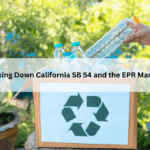Directive (EU) 2015/863 has Amended EU RoHS to Restrict 4 New Phthalates: DEHP, BBP, DBP and DIBP
Bis(2-Ethylhexyl) phthalate (DEHP): max 0.1%: DIBP is an odorless plasticizer and has excellent heat and light stability. It is the lowest cost plasticizer for cellulose nitrate and is widely used in nitro cellulose plastic, nail polish, explosive material and lacquer manufacturing etc
Benzyl butyl phthalate (BBP): max 0.1%: BBP is a phthalate that is mainly used as an additive for plasticising PVC , perfumes, hair sprays, adhesives, glues, automotive product and vinyl floor coverings etc. At present, BBP is banned in all toys and childcare articles ( European Directive 2005/84/EC) and in cosmetics which includes nail polish as it is considered to be carcinogenic, mutagenic and toxic to reproduction.
Dibutyl phthalate (DBP): max 0.1%: Dibutyl phthalate (DBP) is a commonly used plasticizer and is found naturally in small quantities in cloves. It is soluble in various organic solvents, e. g. in alcohol, ether and benzene and suspected to be an endocrine disruptor. It is also used as an additive to adhesives,printing inks and as an ectoparasiticide (drugs which are used to kill the parasites that live on the body surface).
Diisobutyl phthalate (DIBP): max 0.1%: DIBP is a phthalate and an additive used to keep plastics soft or more flexible (plasticiser), often in combination with other phthalates.DIBP has very similar properties to DBP which was banned in toys and childcare articles as well as in cosmetics, it may therefore be used as a substitute for instance in PVC, paints, printing inks and adhesives.
Grace Periods are given to DEHP, BBP, DBP and DIBP as they will be restricted from 22 July 2019 for all electrical and electronic equipments apart from medical devices, monitoring and control equipment which will have an additional two years to comply by 22 July 2021.These are chemicals which are added on top of the existing list which consists of the following
Cadmium(Cd): 0.01%;Mercury: 0.1%;Lead(Pb) : 0.1%;Hexavalent chromium (Cr6+) : 0.1%;Polybrominated biphenyls (PBB): 0.1 %;Polybrominated diphenyl ethers (PBDE): 0.1 %.
It shall be noted that above maximum concentration values apply to each homogeneous material rather than a product or a part itself. Here for instance a homogeneous material means material of uniform composition throughout which cannot be mechanically separated into different materials.Some electrical and electronic products are out the scope of EU RoHS 2. Military equipment, large-scale stationary industrial tools, large-scale fixed installations, active implantable medical devices, and photovoltaic panels are excluded from RoHS.Batteries and package materials are also out the scope of RoHS since they are subject to different directives.In addition to that, certain applications are exempt from RoHS restrictions (For example, Cadmium in helium-cadmium lasers).





